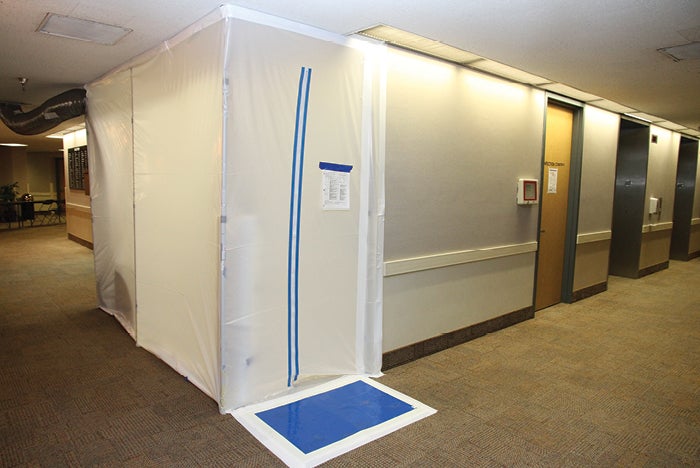Interior finishes and infection prevention
When planning for new construction and renovation, a multidisciplinary team focus should be on making recommendations on design to help provide an easier means of cleaning. Simple design concepts such as single-patient rooms can reduce the risk of infection.
These rooms compared to multibed rooms are far easier to decontaminate thoroughly after a patient is discharged due to less surfaces acting as pathogen reservoirs. The room layout should also be considered with the restroom close to the room entrance to allow for a proper cleaning path to be followed where the restroom is cleaned last.
The ease of cleaning is an important consideration the team should look at when choosing materials for flooring, walls, counters and other room surfaces.
Some floor surfaces have obvious infection control benefits over others. For example, hard flooring would be the natural choice for patient areas over carpeting because it is much easier to clean and maintain than carpeting.
Curtains are widely used in hospitals to provide privacy, although there is uncertainty about the role curtains play in the transmission of pathogens. Eliminating curtains for private rooms should be considered and is a low-cost step to eliminate hand contact.
The multidisciplinary team should review the research literature on evidence-based health care design when planning for new construction and renovations to make design decisions.
The following surface characteristics should be considered when selecting furnishings:
- Durability. Furnishings should be easy to maintain and repair; fabrics that are torn allow for entry of microorganisms and cannot be properly cleaned; and items that are scratched or chipped allow for accumulation of microorganisms and are more difficult to clean and disinfect.
- Cleanability. Furnishings must be able to withstand cleaning and be compatible with hospital-grade detergents, cleaners and disinfectants; and upholstered furniture must be covered with fabrics that are fluid resistant and nonporous.
- Inability to support microbial growth. Materials such as fabric and wood that hold moisture are more likely to support microbial growth; materials such as metal and hard plastics are less likely to support microbial growth; and wet organic substrates (e.g., wood) should be avoided in hospital areas with immunocompromised patients.
- Surface porosity. Microorganisms have been shown to survive on porous fabrics such as cotton, cotton terry, nylon and polyester, and on plastics, which are considered porous substrates; and porous upholstered furniture should not be used in care areas, particularly in areas with immunocompromised patients.
- Absence of seams. Seams trap bacteria and are difficult areas to clean.
Dan Bennett, CHESP, M-TCHEST, director of environmental services, St. Joseph’s Hospitals, BayCare Health System, and excerpted and edited from his chapter on cleaning and disinfection of environmental surfaces in the book, Using the Health Care Physical Environment to Prevent and Control Infection — A Best Practice Guide to Help Health Care Organizations Create Safe, Healing Environments.



